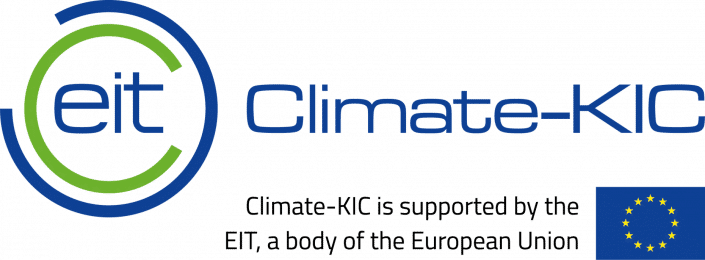Rationale and Aim of the Study
In 2019 EIT Climate-KIC and Ashoka joined hands to conduct a study in 9 countries (Romania, Poland, Czech Republic, Hungary, Slovakia, Bulgaria, Latvia, Lithuania and Estonia) with the purpose of identifying the most important players and changemakers in the climate innovation area.
We looked at changemakers in the fields of:
-
Energy efficiency in buildings
-
Climate-smart agriculture
-
Socio-economic transformation in post-coal regions
-
Air quality / air pollution
Our efforts resulted in nine Climate Changemakers Maps: one for each of the countries we have examined in Central and Eastern Europe (CEE): Romania, Bulgaria, Hungary, Czech Republic, Slovakia, Poland, Lithuania, Latvia, and Estonia. Ashoka’s Network Mapping is a process that uses snowball mapping analysis to identify key innovators, influencers and decision makers in a given sector, to visualize patterns and trends, and to identify the potential for subsequent network connections.
Our snowball research always involves close collaborations with leading sociological and marketing research companies to ensure the scientific accuracy of the methodology deployed. The most important output is observing the relationships with those willing to co-create, nominations for future opportunities, and insights about the field that will guide upcoming activities. The collected data in this study has been used by EIT Climate-KIC, Ashoka and their partners, with the purpose of creating the Climate Changemakers Maps and to potentially further engage with the nominators and the nominees on these topics.
An overview on Romanian results
Energy efficiency in buildings
The building sector in Romania is characterized by a high share of residential buildings (99,08%) and a small proportion of non-residential buildings (0,2%), according to the 2011 National Population and Housing Census. Most of the residential buildings in Romania were constructed before 1970, without any energy efficiency requirements.
Considering the high energy consumption, low energy efficiency, and the energy loss due to old infrastructure, the residential sector has a high potential of energy savings and greenhouse gas emissions reduction.
Even if the overall innovation in the building sector is not high, there are isolated initiatives that push for a change in the way Romanians build and use buildings. One of the most successful projects are Green Mogo - Energy Training and Advice Center and s EFdeN, an interdisciplinary group of students and professionals.
Climate-smart agriculture
The Romanian agricultural sector is highly polarized. There are over three million smallholding farms utilizing half of the countries agricultural land and little over 12.000 using the other half.
The impact of climate change is acknowledged by both smallholders and large commercial farms. Seed companies, like Bayer (former De Kalb Monsanto), Corteva (former Pioneer) and KWS, invest in research and development of hybrid seeds tolerant to adverse weather events. Various NGOs have opened up urban and community gardens experimenting with permaculture techniques.
Socio-economic transformation in post-coal regions
Romania is a coal-dependent country with a fluctuating 25% share of coal in the energy production mix. The country has a balanced energy mix with coal, hydropower, natural gas, nuclear energy and wind power having comparable shares of capacity and power generation.
Innovation is necessary to move away from dirty sources of power generation. One of the most recent developments in the private sector is the founding of the first Romanian Energy Cooperative that has the mission to democratize, decentralize and decarbonizing the energy market. Members of the Cooperative invest in solar and wind projects across Romania and consumers have the option to choose the Cooperative as an energy provider. The project is an innovative development on an energy market characterized by centralized energy production.
Air pollution
Air pollution is a major problem for Romania. The European Commission (EC) decided to refer Romania to the Court of Justice of the EU for failing to meet air quality standards. According to the EC, air pollution levels with particulate matter in the region of the Romanian capital Bucharest have been persistently exceeded ever since the EU law became applicable to Romania.
As a result of a growing interest for data on air quality, there has been recent developments on the innovation side. URADMonitor, for exemple, is a Romanian company that develops air monitoring sensors for the general public. The sensors are used by NGOs and citizens and provide with growing data on dangerous emissions in the air.
Ana Murray
Strategy & Partnerships Manager, Romania
Agata Stafiej-Bartosik
Country Representative, Poland
Before working for Ashoka she has worked for PwC, co-leading the Sustainable Business Solutions Advisory Team. She has created the stakeholder dialogue line of service, running stakeholder dialogue sessions for Orange, Cemex, Grupa Żywiec, as well as a business-NGO dialogue on controversial shale gas extraction - rewarded as a best practice by the European Commisson. Before that she was a manager for Corporate Social Responsibility at Danone Group in Poland. She was part of the Child Malnutrition Working Group at Minister Michał Boni's team of advisors to the Polish government. She co-founded The Foundation for Social Communication in Poland and SMartKolektiv in Serbia – organizations helping NGOs to use the tools of marketing in order to support their social mission. She has co-created several public service campaigns including a very effective HIV/AIDS campaigns for cross-border truck drivers, several GOTV campaigns in Serbia (i.e. Prati Prst). She is an Ashoka Fellow since 2001.
EIT Climate-KIC
EIT CLIMATE-KIC is a Knowledge and Innovation Community (KIC) that works to accelerate the transition to a zero-carbon economy. Supported by the European Institute of Innovation and Technology (EIT), EIT Climate-KIC identifies and supports innovation that helps society adapt to climate change.


EIT Climate-KIC
EIT CLIMATE-KIC is a Knowledge and Innovation Community (KIC) that works to accelerate the transition to a zero-carbon economy. Supported by the European Institute of Innovation and Technology (EIT), EIT Climate-KIC identifies and supports innovation that helps society adapt to climate change.



Social Network Analysis
Number of contacted persons: 122
Finalised interviews: 105
Response rate: 90.9%
Total number of nominations: 189
otal number of unique nominations: 147
Average amount of nominations by interview: 1.8
The most nominated changemakers in the study are: Ioana Ciută (Asociaţia Bankwatch România), Lavinia Andrei (Terra Mileniul III), Horia Petran (Institutul National Urban-Incerc), Radu Motisan (Magnasci SRL) , Felicia Ienculescu Popovici (Greenitiative), Bogdan Gioară (Asociatia Reper 21), Alin Tănase (Greenpeace), Mihai Toader Paşti (EFdeN) și Lucian Corduneanu (Sensix)
Romania is the country with the highest gender equality among climate change changemakers in the region.
Even though the legal framework is perceived as on of the biggest obstacles for the climate change innovation, changemakers from the public sectors are on of the smallest groups in the study.